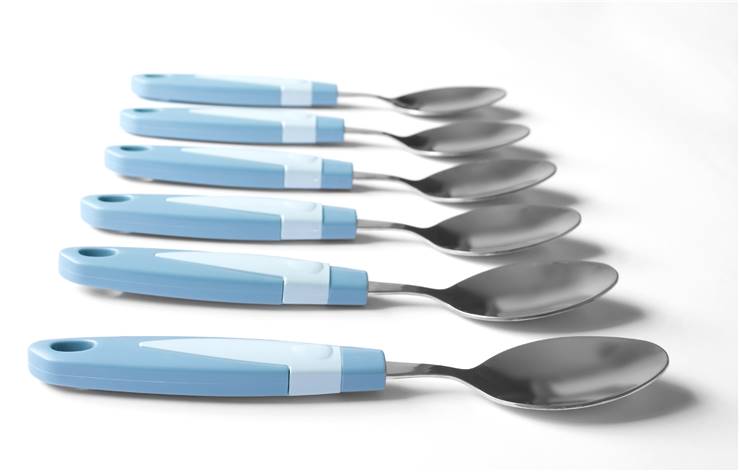Timeline of Eating Utensils
- 500.000-12.000 BC - During the Stone Age of mankind, eating utensils consisted form simple sharp stones intended for cutting meat and fruit. Simple designs of spoons were made from hollowed out pieces of wood or seashells that were connected to wooden sticks. Animal horns also were used as a means to eat liquid foods.
- 12.000 - 3.000 BC - Neolithic times (or sometime called New Stone era) brought the rise of technology that improved tools that were needed for production, preparation and eating of food. Pottery enabled food to be stored and prepared more easily, and stylized pieces of stone were formed into shapes simple knife that we know today (with handholds that were covered in wood or animal skin).
- 3.000 BC - First usage of chopsticks in Ancient china.
- 3.000 BC - 400AD - Bronze Age brought great advanced in production of weapons and objects made from bronze or copper. Eating utensils benefited from that, and knives and spoons received much needed upgrade to more durable material. Rarity of metals in that early age prevented the use of metal spoons, which remained available only to the richest members of society (Pharaohs in Egypt and Royal courts in Europe).
- 400AD - 1000AD - Iron Age brought much needed durability to eating utensils, with discovery of metalwork. Knives and other war equipment became commonplace across entire Europe and small "sharp tipped" knives became the integral part of eating utensils.

- 206 BC - 220 AD - Chinese Han Dynasty court members started to use chopsticks in their meals.
- 5th century AD - Anglo-Saxon people popularized word "spon", which described their wooden version of spoon. Other countries started producing simple spoons from both wood and other materials (such as bone, shell, stone, etc.).
- 6th - 10th century - In the medieval Europe, wealthy class of people was knife managed to protect the popularity of knife as the only eating utensil of that time. Even then, knives were only used as a symbol of wealth, often carved in very extravagant designs. Remainder of poorer population continued to eat with their bare hands.
- 11th century - Italian nobleman DomenicoSelvo married Greek princess who brought with her first recorded fork in central Europe. Her addition of fork to the eating practice was regarded as scandalous and heretic.
- 1364-1380 - Court of King Charles V of France held several pieces of forks in his vaults, but they were almost never used. Some proof remains that they were used only for some exotic foods which created long staying stains on the fingers.
- 1368 - 1644 - Chinese Ming Dynasty greatly popularized use of chopsticks across majority of Asia.
- 1533 - Catherine de Médicis of Italy brought to the France the spoons that were in use by Italian nobleman. Under her influence, spoons slowly started circulating among the nobleman's of France, and eventually entire Europe.
- 1560 - By this time Italian adopted forks, German adopted spoons, and Frenchmen started providing multiple "host owned" knives for all guest at high-profile meals.
- 1611 - England continued to live without spoons, which were first introduced to them by the traveling records of Thomas Coryat. His teaching sadly managed to took hold only after half a century.
- Early 17th century - Fork became commonplace across entire Europe as a tool of steadying food while cutting, and in lesser case for providing easier transfer of solid food between the plate and mouth. Majority of people still used sharply pointed knives for that purpose.
- 1630 - Forks and blunt tipped knives start arriving at colonies in North America.
- 1669 - French King Louis XIV of France banned the use of sharp tipped knives in entire France as a means to reduce violence. This introduced new era of blunt tipped eating knives.
- Early 18th century - Germany preferred four-tinned forks, while England continued to use forks with two tines.
- Mid-18th century - Four tinned fork with curved lines became standard in entire Europe. Its design (which is used to this day) enabled users to easily scoop food from the plate, much better than earlier 2 tinned versions.
- Early 19th century - Forks became finally accepted in United States, and England high society becomes fascinated with specialized utensils (tomato spoons, sardine forks, jelly knives and many more).
- 1920s - Invention of stainless steel enabled the creation of eating utensils that were easy to produce and maintain.
- Late 20th century - Plastic introduced new designs for eating utensils. Hybrids utensils (spork, knork, spife and sporf) combined several eating tools into one design.
